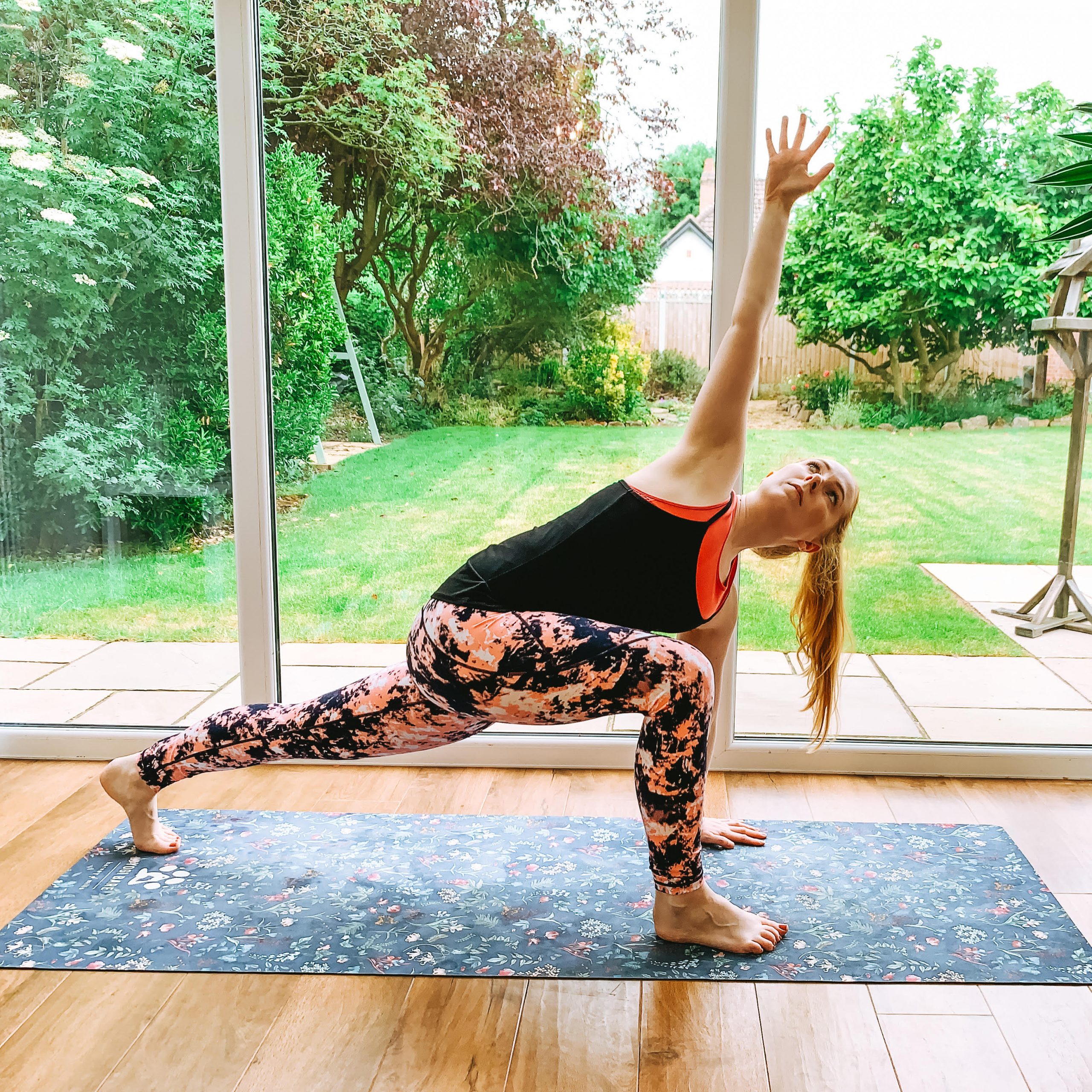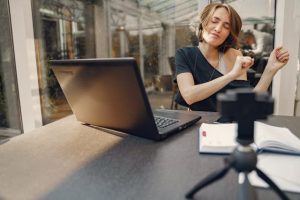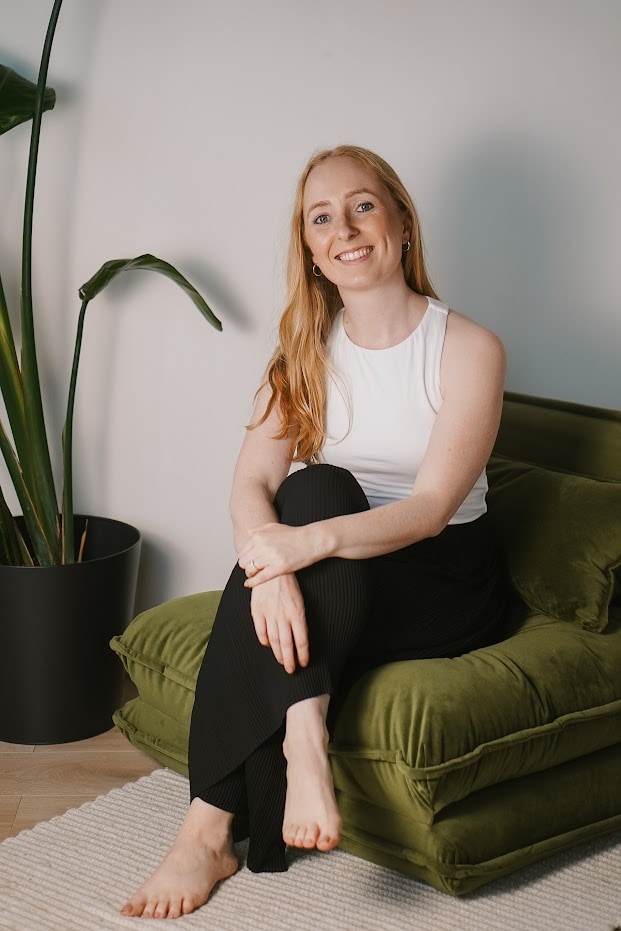Yoga is often talked about as a positive tool to help people reduce symptoms of anxiety, but does yoga actually help with anxiety?
My conclusion is this: it depends.
First, let’s look at why the impact of yoga on symptoms of anxiety can be wildly diverse…
Can yoga help with anxiety?
Yoga is a very diverse practice, consisting of very different styles, techniques, teaching approaches and – as a result – the impact on individuals can vary wildly.
For instance…
In a yin class, you practice a few numbers of postures, hold them for a longer period of time, and there is a focus on passive stretches.
This can be a very intense mental challenge to stay in a single posture for a long period of time, and so the emotional impact can vary. Some people struggle to stay in that intense state but find that with time, they learn to relax more in the present moment.
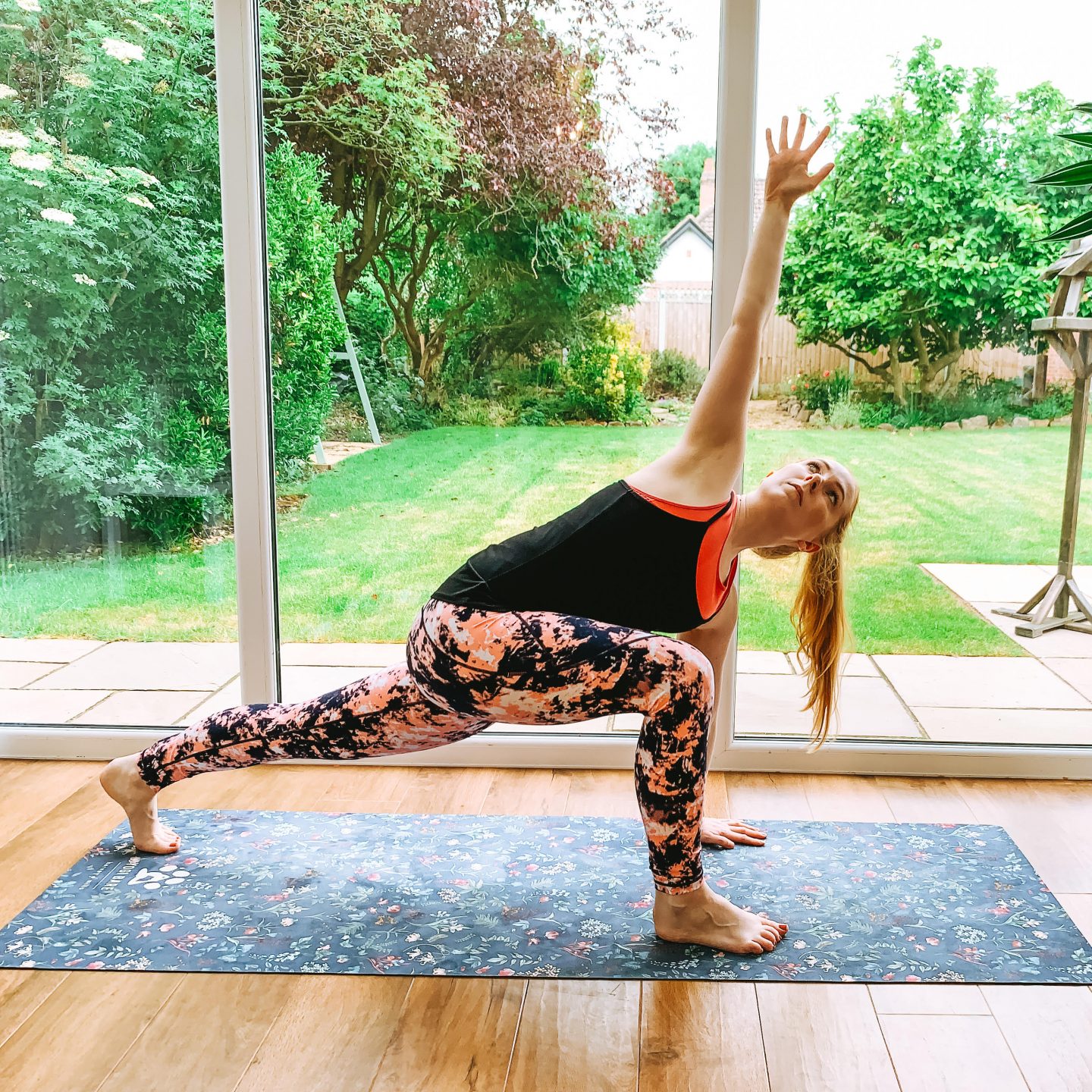
By contrast, in a vinyasa yoga class, you do many postures in a row, and often at a quick pace, with one breath per movement.
Some yoga classes incorporate specific breathing techniques such as ujjayi breath or take time at the beginning or end of the practice to do a breathing exercise or meditation.
There are other teachers who focus on a structured, carefully planned, anatomically-led practice, which builds strength or mobility in a particular area.
Plus, there are some teachers move intuitively and theme classes around a philosophical concept.
Can you see how the impact that yoga has on a person with anxiety might vary?
And then there’s the environment in which you practice yoga
Imagine a person called Clare, who is 42 years old, hasn’t done any exercise for several years and experiences social anxiety.
Let’s say Clare decides to try yoga and signs up to a trendy, studio class in central London, attended primarily by students from a local ballet school in their early 20s kitted out in Lululemon.
Do you think Clare is likely to feel relaxed, at ease, and like she has found a safe haven with people she can relate to?
Considering Clare’s social anxiety, it’s not impossible, but it’s also less likely!
That’s not to say Clare does not have the right to attend the class, of course, she does! And it would be the teacher’s responsibility to create an environment that is welcoming to her.
But for someone struggling with anxiety, then finding the right class, that suits their needs, with the right teacher is important too.
Which leads me on to teachers…
Teaching style can impact how yoga is experienced
Teaching styles can vary enormously as well. Some teachers take a very inclusive approach, and like to create a gentle, welcoming environment.
Other teachers adopt a strict, authoritarian style and hold their students to a high bar.
There are teachers who are inclusive, welcoming but high energy and practice with pumping dance music.
I LOVE the diversity of yoga and the magic that you can experience when a teacher is in their element, teaching in a way that suits them, in a style they are experienced at teaching.
But it makes it incredibly difficult to say with any accuracy whether yoga will help you if you are experiencing anxiety!
Have there been studies to show the impact of yoga on the symptoms of anxiety?
Yes, there have been some positive research studies that have linked yoga to positive outcomes for people experiencing symptoms of anxiety.
A study published in 2020 found Kundalini yoga to be effective in improving symptoms of Generalised Anxiety Disorder.
However, a meta-analysis published in 2018 looked at studies into yoga’s impact on anxiety and concluded:
“There was inconclusive evidence for effects of yoga in anxiety disorders. More high-quality studies are needed and are warranted given these preliminary findings and plausible mechanisms of action.”
Is it all that surprising considering the variety of experiences within ‘yoga’ that we already looked at?
How can yoga help with anxiety?
There are some broad generalizations that we can make about yoga and anxiety, regardless of yoga style, teaching approach and environmental factors.
1. Yoga may help with the regulation of the nervous system, which could have a positive impact on symptoms of anxiety
Yoga is often associated with calming and soothing actions like breathing slowly or gentle stretches. In fact, yoga can be a challenging form of cardio exercise, particularly when it includes plyometric work (which I often include in my LYT Method Yoga classes).
But that doesn’t mean that it doesn’t have a soothing effect on the body!
Exercise triggers the body to release endorphins, which are hormones that have a similar effect on the body to morphine!
Just like the well known ‘runner’s high’, if you practice yoga, you will recognise the feeling at the end of class – a buzzy, happy, yoga high!
When you practice more dynamic movement, you activate the sympathetic nervous system (SNS), which is the ‘fight or flight’ mode. This gives a boost of adrenaline to help you to work harder. Staying in this fight or flight state, however, is not healthy or good for the body.
In yoga, however, throughout the class you stay connected to your breath, to help manage the fight-or-flight response, and at the end of class you typically practice savasana, or resting pose.
In this resting state, you train your body to come back into the parasympathetic state (PNS), the rest-and-digest mode.
The more you practice yoga, the more you can improve the body’s adaptability, meaning its ability to respond quickly to demand.
This means your body will activate the SNS more quickly when it needs to recruit muscles to meet the demand of, for example, a challenging jumping movement. Your body will then switch to the PNS more quickly when it is time to relax.
2. In yoga, you don’t need to rationalise your way out of an emotional state – you start with changing the state of the body
To be clear, talking therapies are absolutely recommended for anyone suffering from symptoms of anxiety. You should always follow the advice of your medical professional.
Yoga may also help to address symptoms of anxiety by starting with regulating the body.
There is evidence to show that under stress, the prefrontal cortex of the brain can shut down. The prefrontal cortex is the part of the brain that is our command centre. It is the CEO, the boss, the part that analysis the incoming data and makes decisions.
When this shut down occurs, the amygdala takes over, resulting in an increase in panic, emotional responses and compulsive behaviours.
Anxiety is based around worry of what has happened in the past or what may happen in the future. So if the prefrontal cortex has shut down – which is the part of the brain that analyses – trying to verbalise, rationalise and analyse may be less effective or even impossible.
In the book, The Body Keeps the Score, by Bessel Van Der Kolk, he recommends yoga as a means to regulate the body, and bring the mind into a state where you can begin to process your feelings.
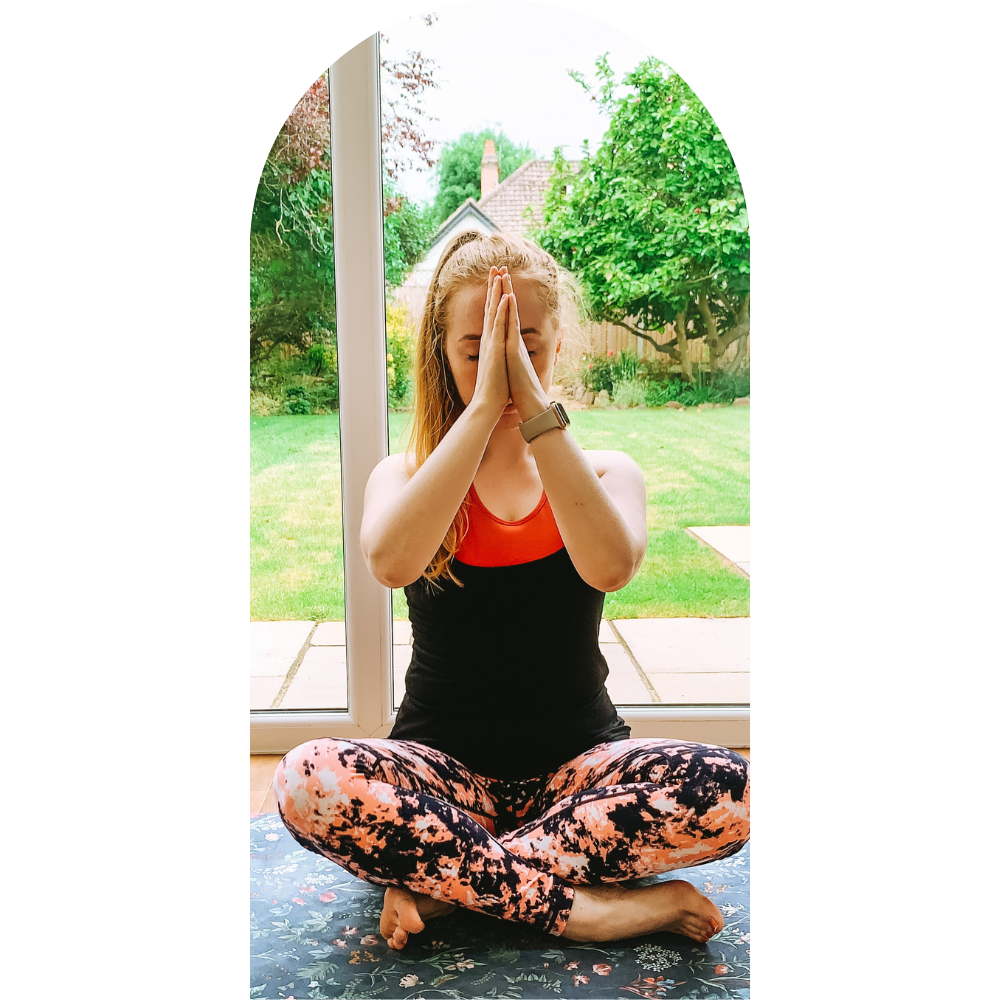
3. Yoga may help improve interroception
Interroception is the ability to sense the internal signals of the body. Through most forms of yoga, you can begin to increase your awareness of your body and improve your connection with it.
Again, I’ll quote the incredible book The Body Keeps the Score, which says that:
“If you are not aware of what your body needs, you can’t take care of it. If you don’t feel hunger, you can’t nourish yourself. If you mistake anxiety for hunger, you may eat too much. And if you can’t feel when you’re satiated, you’ll keep eating.”
Bessel van der Kolk
He then goes on to say that:
“In yoga, you focus your attention on your breathing and on your sensations moment to moment. You begin to notice the connection between your emotions and your body – perhaps how anxiety about doing a pose actually throws you off balance.”
Bessel Van der Kolk
How incredible is that?
Plus, by staying with challenging postures, you are training your mind that you can do hard things. This inner sense of resilience that you cultivate when practicing yoga is powerful.
Not only that, but as Heather Mason at The Minded Institute says:
“Some postures are challenging, but you are learning to relax under physical duress and this can help you handle long-term anxiety.”
Heather Mason, The Minded Institude
Should I practice yoga to help my anxiety?
We really need more high quality research studies into the impact of yoga on anxiety. As it stands right now, there simply is not sufficient research to establish the impact of yoga on anxiety.
New research studies should factor in the variation of yoga styles and teaching approaches to standardise the baseline for assessment and improve the accuracy of the outcomes researched.
In the meantime? There are many, highly compelling reasons that yoga can be a powerful tool to improve symptoms of anxiety.
If you suffer from anxiety, my advice would be to find a yoga class and style that works for you.
If you are nervous about attending a class in person, you could start with a yoga flow on YouTube or you could book in a 1:1 session via Zoom with a teacher.
It’s important that you choose a teacher whose style of teaching resonates with you. You may find that a stricter, more authoritative style of teaching helps you relax by giving you more structure. Or you may prefer a teacher who offers gentle, soothing practices with a calm voice.
I offer 1:1 classes via Zoom, and you can book a free clarity call via my website here to find out whether my classes might work for you and how I can help.
